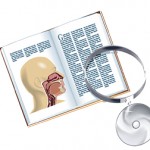
Explore This Issue
March 2015Background
A common question asked by patients who are healing from a surgical incision is, “What is the best product to use to minimize a scar?” Commercially, the many topical products on the market make it difficult to decide what is the best product to recommend. Each product claims to have its advantages in reducing scarring with its combination of ingredients. Often, many of these products are not regulated by the U.S. Food and Drug Administration, because over the counter (OTC) products are not classified as a drug or device. Thus, the chosen topical antiscar product is frequently based on anecdotal evidence, physician bias, or patient preference. Silicone gel, paper tape, cyanoacrylates, onion extract, and vitamin E are commonly used topical products for post-incision scars. This article reviews the evidence surrounding the use of these topical products to reduce post-incision scarring.
Best Practice
Currently, the initial standard of care to minimize post-incision scarring during epithelialization is to keep the incision moist, clean, and protected from tension and mobility. After the incision is closed, silicone gel, cyanoacrylates, and paper taping have shown promise in reducing post-incision dermal scarring in clinical trials. The topical use of vitamin E and onion extracts have not been shown to reduce scars in clinical trials. Read the full article in The Laryngoscope.